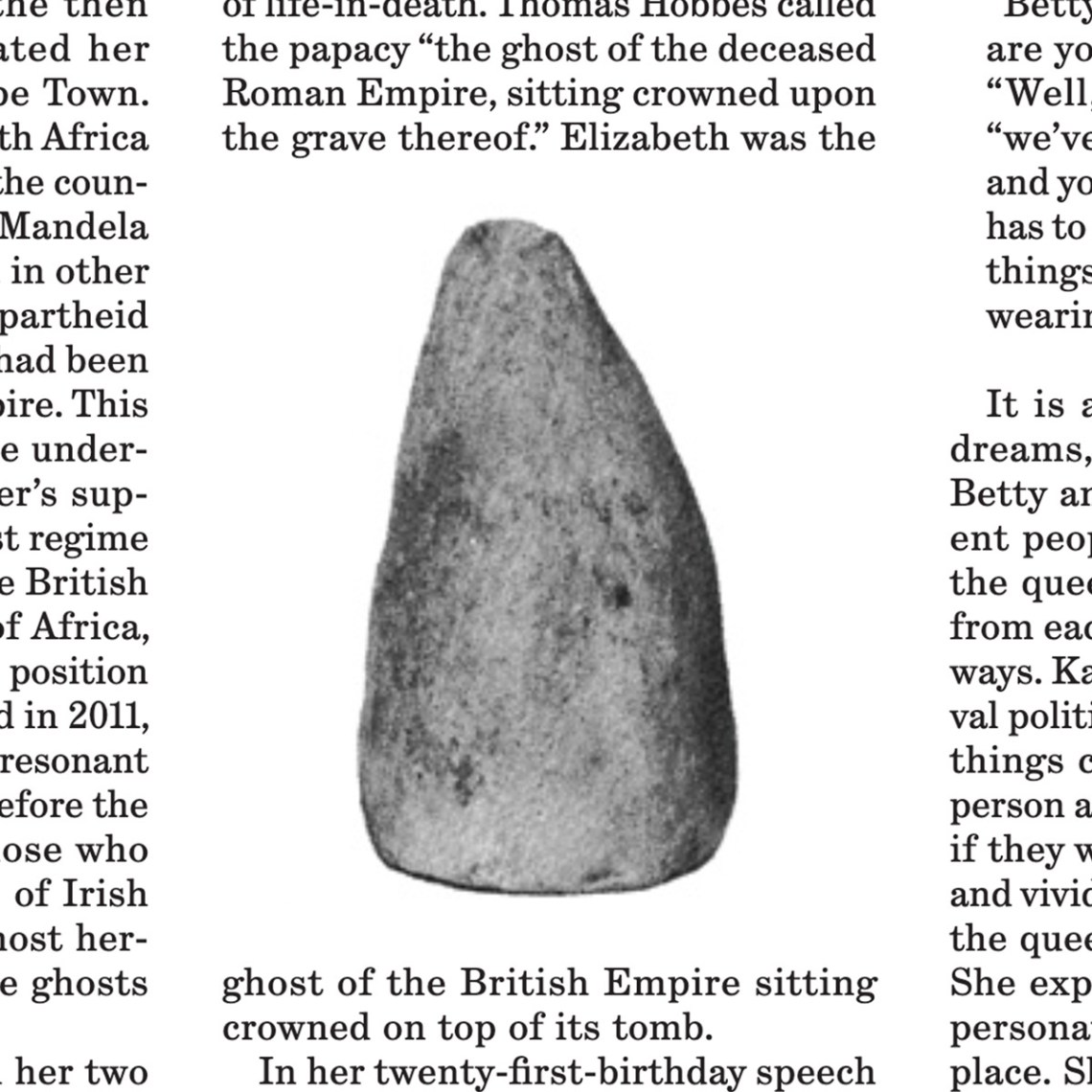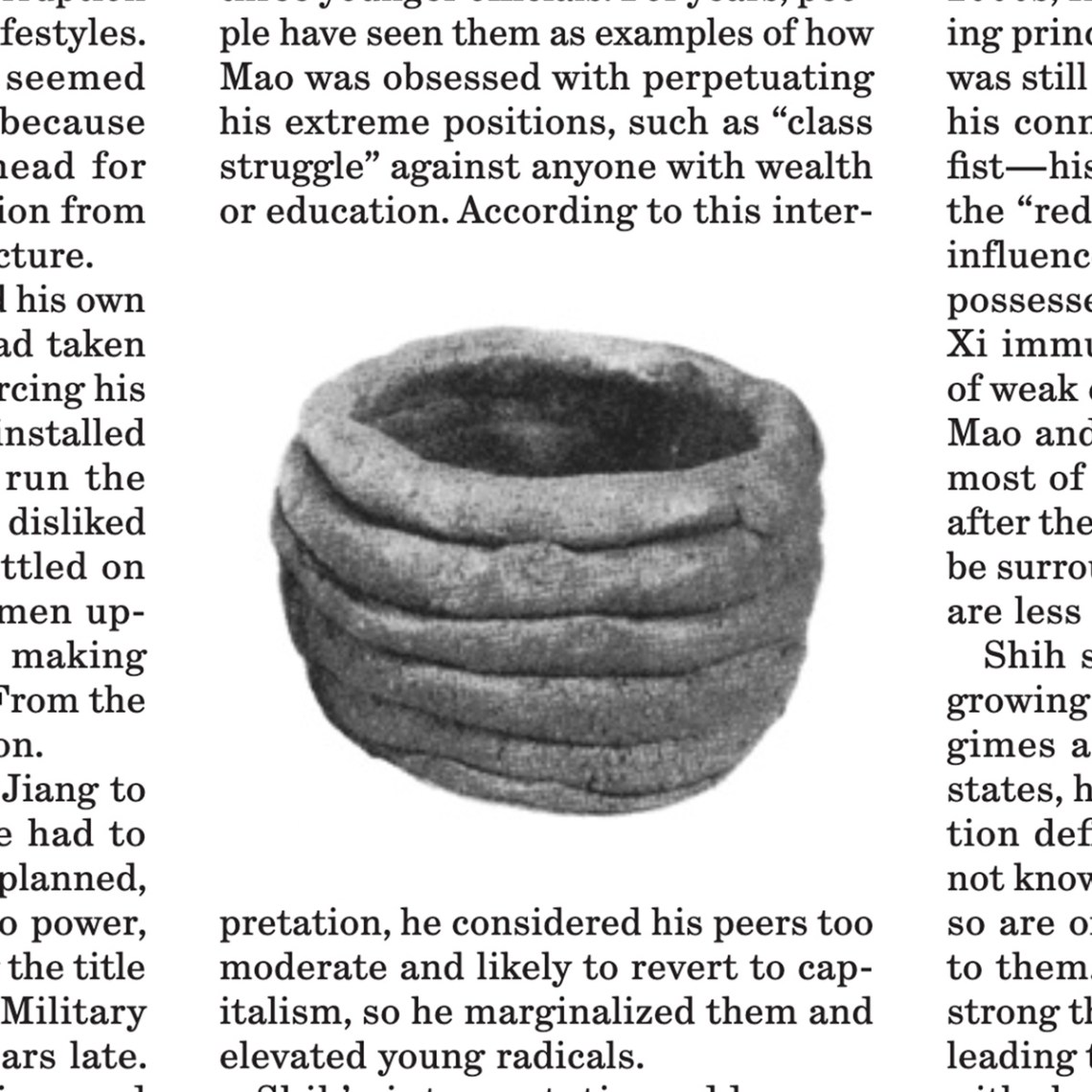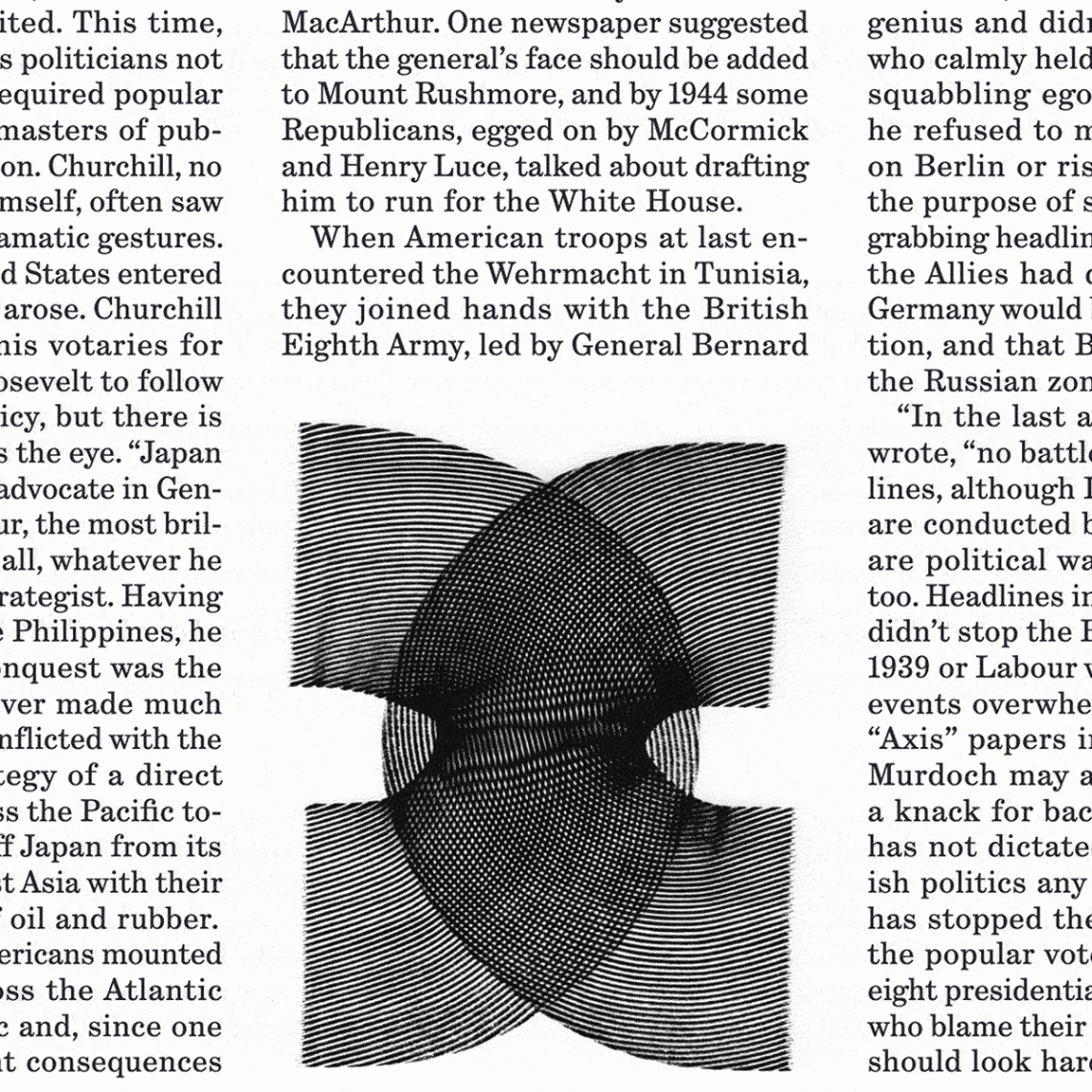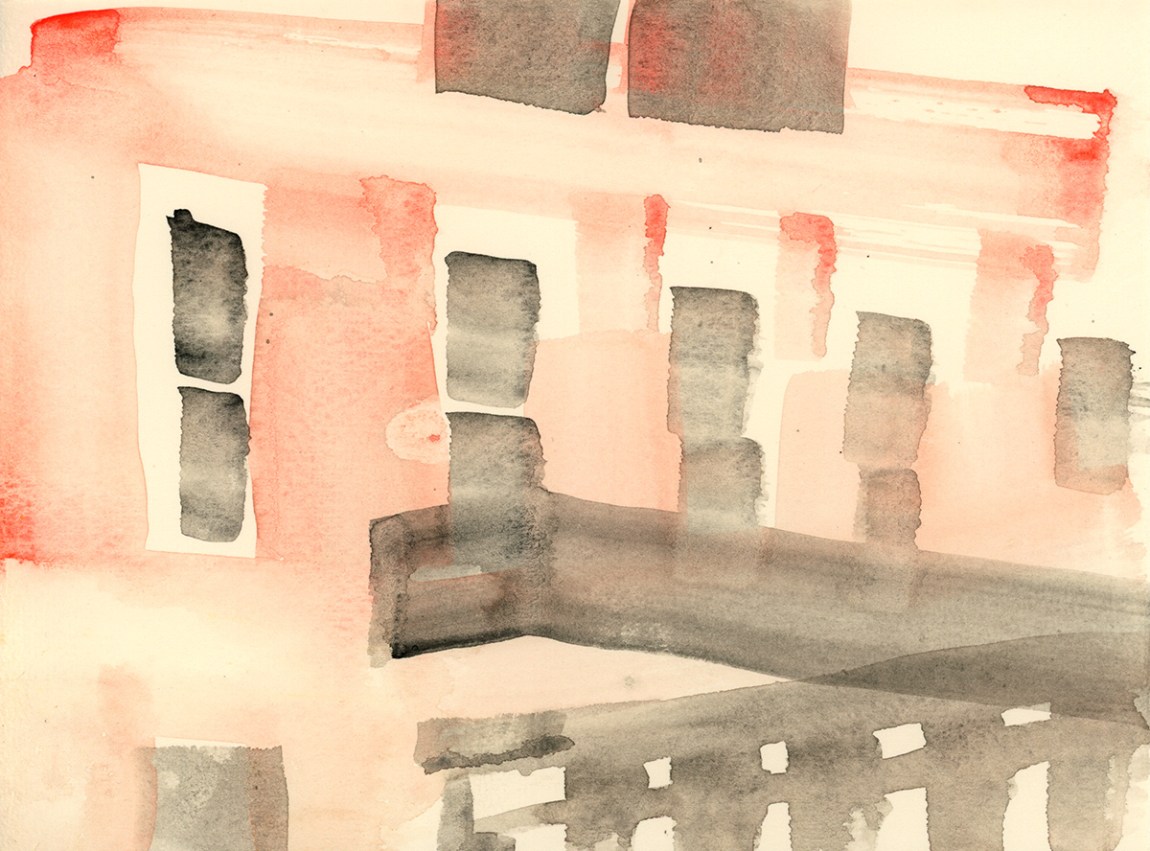A dispatch from our Art Editor on the art and illustrations in the Review’s October 20 and November 3 issues.
Our second art newsletter comes from the table beside my window in my apartment on 10th street in New York City. Many of the staff, myself included, continue to work at the Review remotely as our West Village office is being packed up and moved to a new building on the other side of Manhattan. Fall has arrived, the sky above the buildings I look out over is overcast; pigeons, doves, and a blue jay perch on and alight from my fire escape as I read and assign for the upcoming issue.
This year’s Frankfurt Book Fair Issue was a big one, including stories on medieval hairdos, the metaverse, bears, Balmoral, and Buster Keaton. The cover image is a 2019 painting, Hidden Jiacometto, by Volker Hermes, a Dusseldorf-based artist who modifies portraits and other paintings, often from the Renaissance, Baroque, or Biedermeier periods, adding embellishments and concealing the sitters’ faces until the familiar shifts into the surreal and absurd.
I first saw Hermes’s work in a 2020 issue of Die Zeit, and when I read Mary Wellesley’s review of A Cultural History of Hair in the Middle Ages, I immediately thought of Hidden Jiacometto. You can see more of Hermes’s art on his website here.
For years I’d had a strange Edvard Munch drawing stuffed into my mental file of images, and when I read Leslie Jamison’s review of In the Eye of the Wild, by Nastassja Martin, and Lamb, a film by Valdimar Jóhannsson, it came to mind. Munch’s landscapes and figures always seem balanced on a razor’s edge between pain and beauty, which felt right for Jamison’s review of two bracing stories about wildness and intimacy.
Images of women and bears are never far below my consciousness; the novel Bear, by the Canadian writer Marian Engel, won the 1976 Governor General’s award when I was three and is considered quintessential Canadian reading. Engel has cited as inspiration the Haida legend “The Bear Princess,” in which a young girl is kidnapped by a tribe of bears and forced to wed their chief. The novel is about a librarian who spends a summer working at a remote manor house where the former owners’ pet bear still lives on the grounds. The pair eventually have an emotional and sexual relationship.
Other contributions to the Frankfurt Issue came from the artists Elizabeth Peyton and Emily Hass. Masha Krasnova Shabaeva created a meta-scape for Sue Halpern’s review of The Metaverse: And How It Will Revolutionize Everything, by Matthew Ball; and Hugo Guinness made a woodcut portrait of Agatha Christie for Frances Wilson’s review of Agatha Christie: An Elusive Woman, by Lucy Worsley.
The director Mike Mills contributed two drawings of his favorite filmmaker, Buster Keaton, for Geoffrey O’Brien’s review of two new biographies, and the LA-based illustrator Leah Reena Goren drew the LA poets Adam Kirsch and Boris Dralyuk for Anahid Nersessian’s review of their latest collections. Andrea Ventura painted a creepy and chilling Jared Kushner for Joshua Cohen’s review of Kushner’s creepy and chilling memoir.
The series art for the issue was done by the Dutch artist Ruth Van Beek, whose strange and wonderful collage work last appeared in our pages when she illustrated Natalie Angier’s 2021 review of Fuzz: When Nature Breaks the Law, by Mary Roach and Wild Souls: Freedom and Flourishing in the Non-Human World, by Emma Marris.
I held a meeting about the November 3 issue cover from my table by the window, and after considering the issue’s motif of interior phantasmagorias—a piece by Merve Emre on the personal essay; a review by Kathyrn Hughes of Sam Knight’s wonderful and eerie The Premonitions Bureau; James Gleick’s doubletake on Buckminster Fuller—we land on a zimmerbild by the New York–based artist Scott Csoke, who paints rooms, dogs, gingham, and objets with energetic joy, camp, and an edge of queer politics.
I particularly like Csoke’s portraits of homosexual dogs and cakes piped with messages like “My Straight Parents Can’t Teach Me Queer History.” Their toiles, wallpapers, and mantles feel alive—“Seussian,” as our editor, Emily Greenhouse, called them. A well-lit interior seemed fitting as the weather turns and days shorten.
The New York artist Grant Shaffer contributes a delicate sketch of an un-mustachioed Rilke—for a review of Lesley Chamberlain’s Rilke: The Last Inward Man by John Banville—but his bare upper lip is queried by an editor, and the young poet’s mustache grows back. The cartoonist Seth does a mesmerizing portrait of Buckminster Fuller to accompany Gleick’s spiky review of Inventor of the Future: The Visionary Life of Buckminster Fuller, by Alec Nevala-Lee. For a piece on prison abolition by Bill Keller, Matt Dorfman sends eight sketches inspired by a 1967 cover of Dietrich Bonhoeffer’s Letters and Papers from Prison. Lorenzo Gritti sends us four versions of Ian McEwan for a review by Giles Harvey, and, less than a week before Annie Ernaux’s Nobel win, the Frankfurt-based illustrator Tatjana Prenzel sends three sketches of the French novelist for a prescient review by Sigrid Nunez of a recent translation of Ernaux’s Getting Lost, a diary of a love affair.
Advertisement
When I read Merve Emre’s essay on the personal essay, I mentally rifle through art about mirrors: Escher’s hands, images of echo chambers, Tracy Emin’s bed, Magritte’s reflections: it’s a rich vein. Finally, I remember a series of self-portraits of the letter “I” that the British conceptual artist Mark Wallinger made in 2013. (I consider Wallinger a personal essayist himself. One more bear story: in his 2004 video piece Sleeper, Wallinger spent ten consecutive nights in Berlin’s Neue Nationalgalerie wearing a brown bear suit. The bear is a well-known symbol of Berlin, and the video is about the city’s involvement in the espionage battles of the cold war.)
The series art for the November 2 issue is by the designer Pat Kim, who makes prints, furniture, and sculptures out of his Red Hook studio. I thought his moiré monoprints made for wonderful rests on the pages.
As the dark closes in, the high holidays approach. For her Halloween costume, my daughter considers a cat or a teenager but finally settles on a cross between Miss Havisham and Tim Burton’s corpse bride. “You could be Miss Teen Havisham,” I suggest. She looks puzzled, and I realize she’s never seen the spectacle of a beauty pageant, let alone a teen one. I start to explain, but she glazes over. The spookiest art in the November 2 issue might be a small oil painting, Is the cat’s window open?,done on a hardback book cover by the Scottish artist Andrew Cranston. It illustrates Kathryn Hughes’s review of The Premonitions Bureau, Sam Knight’s book about British doomsayers in the 1960s. I was given a book of Cranston’s paintings, Waiting for the Bell (2021), as a present and found that a number of his moody, foreboding, Bonnard-stippled scenes and landscapes suited the essay’s investigation into the everyday paranormal.
Pairing existing fine art with reviews is one of my favorite parts of my work at the Review. It reminds me of a line from The Premonitions Bureau that Hughes quotes: “Finding meaning where there is none is a neat definition of madness…. But making connections, in what we see, or hear, or dream, is also a definition of thought itself.”



























